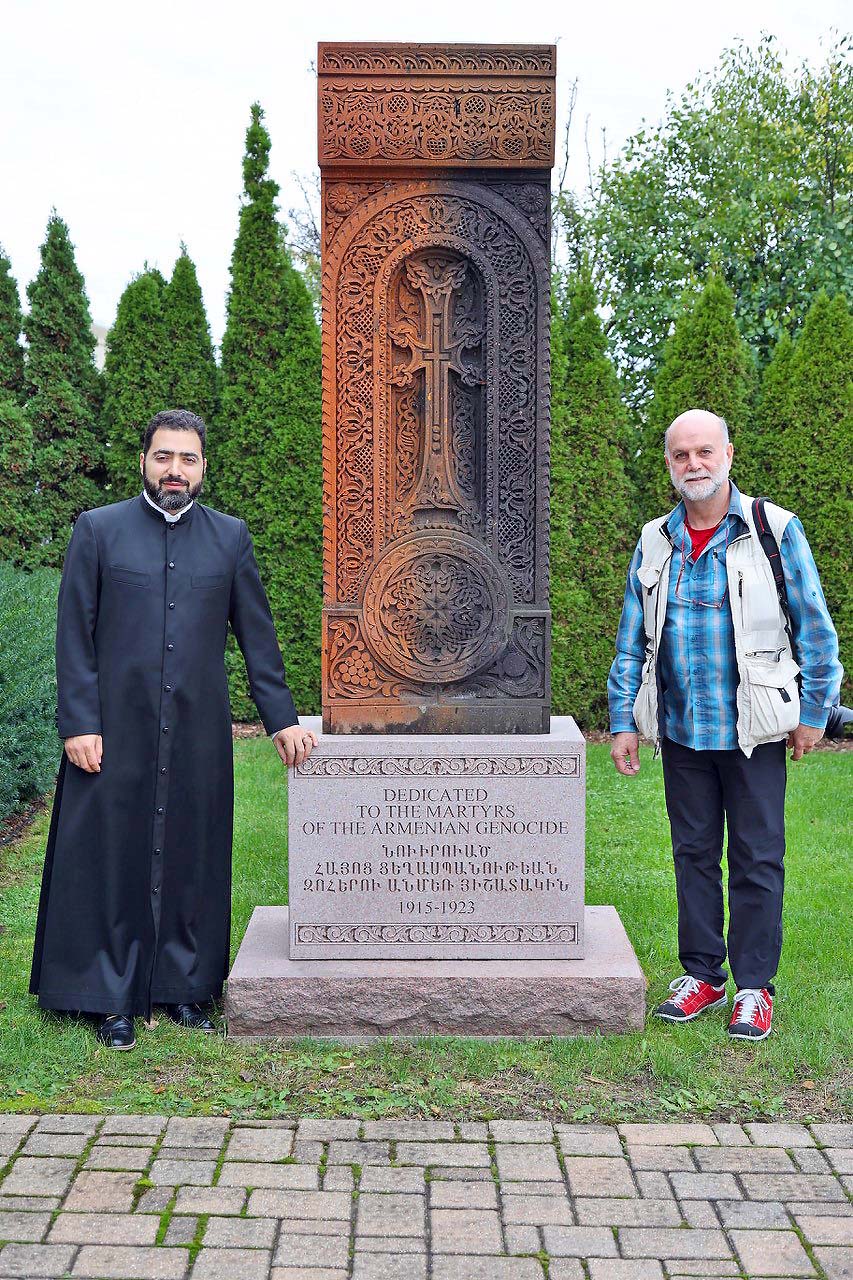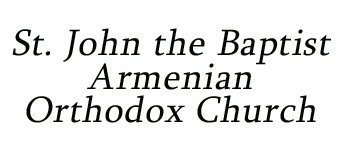Photographer Hrair Hawk Khatcherian Talks About ‘Khatchkar’
By David Luhrssen

Khatcherian with Fr. Guregh at St. John’s Genocide Memorial Courtyard in Milwaukee, WI.
(Milwaukee, Wis.) The physicians gave photographer Hrair Hawk Khatcherian only 10 days to live. As Khatcherian told the audience at his Oct. 24 slide show and talk at St. John the Baptist Armenian Church, he made a vow: if he survived lung cancer, he would travel to every country in the world with at least one Armenian church and take pictures. “I wish I had just offered madagh,” he joked. Although keeping his promise proved to be a larger than anticipated investment in time and money, the Canadian Armenian traveled to 48 nations for the photos he chose to include in his 2013 book, One Church, One Nation.
Khatcherian devoted most of his presentation as part of the Armenian Cultural Month observance at St. John in Milwaukee, to his latest book, Khatchkar. Beautifully produced and photographed, the 500-page coffee table book is an impressive document of Armenian religious stone carvings. Included are not only the khachkars that dot the Armenian countryside but bas-reliefs in churches and monasteries displaying events from the life of Christ and iconic images of Jesus and Mary the Mother of God.
With many visual juxtapositions, Khatchkar is designed to reveal common themes across different media by contrasting images of stone carvings with illuminated manuscripts, metalwork and fabric. Many of the khachkars he photographed were difficult to access. He clambered along slippery cliffs, stepped carefully through a Soviet-era minefield, braved the threat of Azeri snipers and ventured into the vicinity of Mount Ararat without alerting soldiers at a nearby Turkish army base. Several khachkars he photographed rise to 16 feet in height. Another difficulty involved photographing khachkars with natural light sufficient to reveal their detailed carvings. Because they face east, the best time of day for capturing the standing stones is between noon and 2 p.m.
Khatcherian photographed khachkars in Armenia, Artsakh, the Crimea, Iran, Lebanon, Georgia, Turkey and the Holy Land. “It took 26 years and 100 trips to Armenia and Artsakh,” he said, describing a search that revealed khachkars in their diversity was well as commonality and their fate. They remain objects of reverence in Armenia. However, in Kurdish regions khachkars were used as building materials, many have been deliberately defaced in Turkey and others were bulldozed by the Azeris. Several khachkars photographed by Khatcherian were evacuated from Artsakh to Etchmiadzin at the close of the 2020 war.

 WIkemedia
WIkemedia